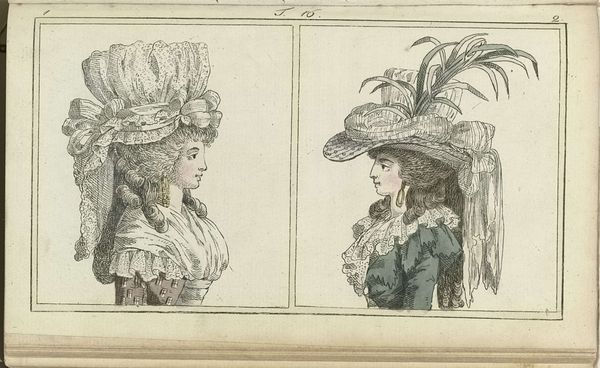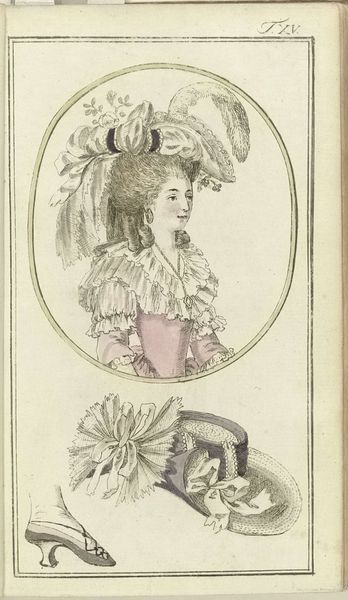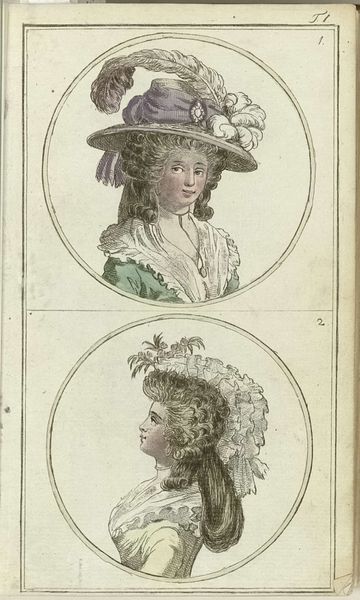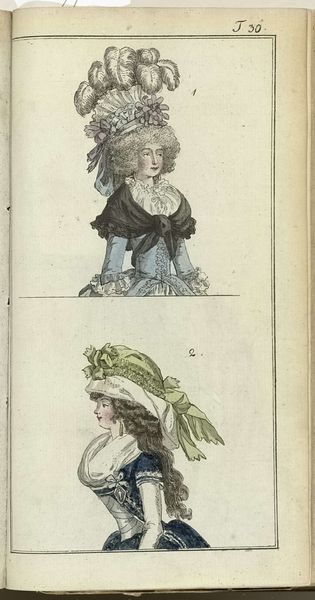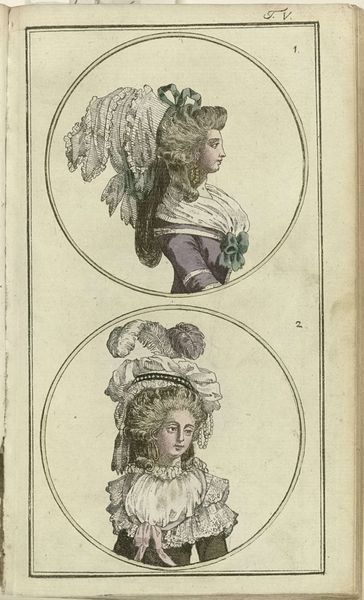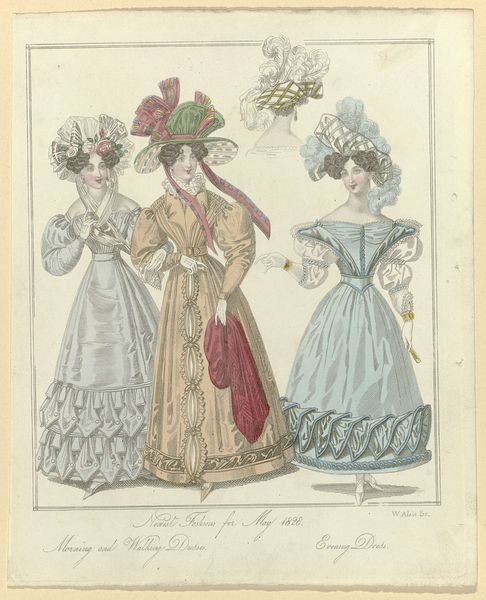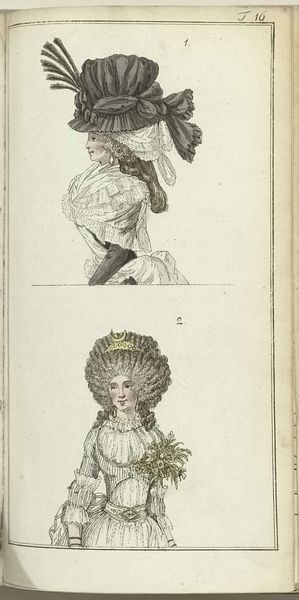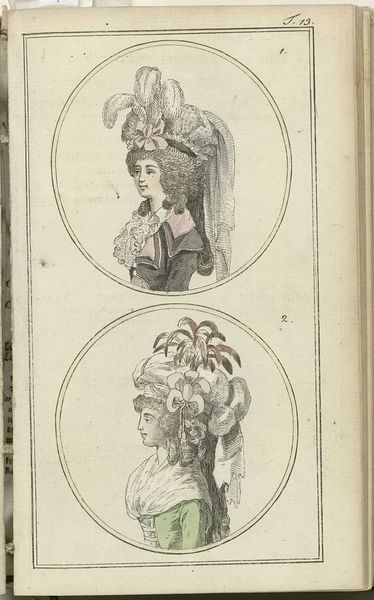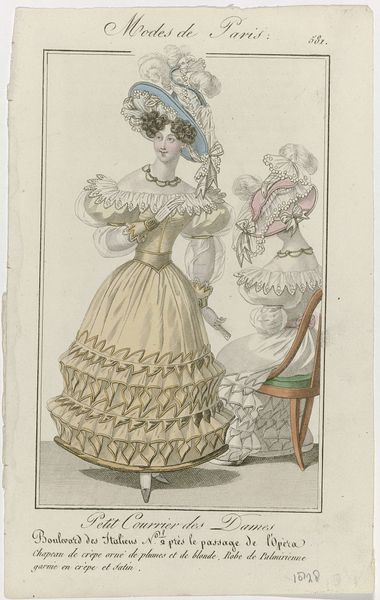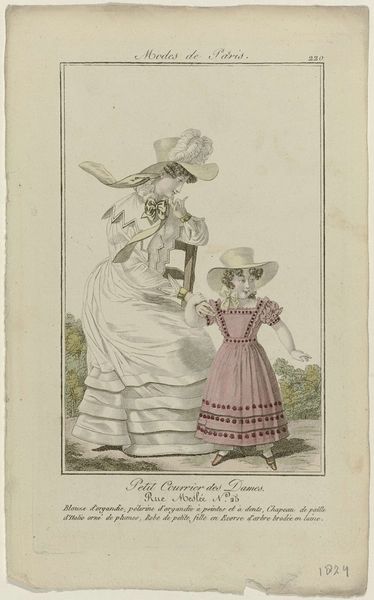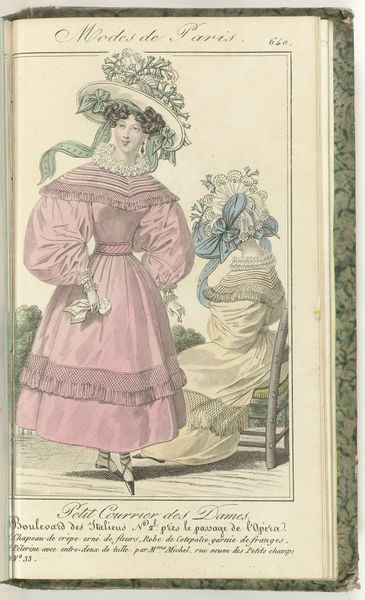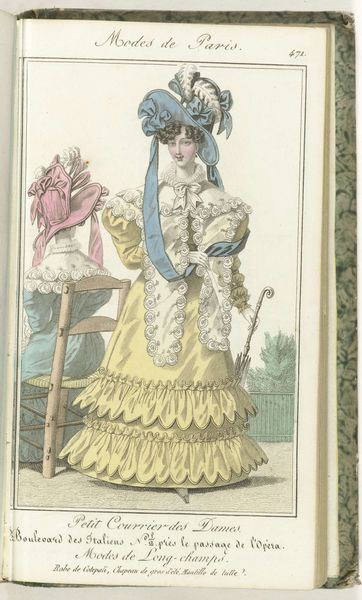
Copyright: Rijks Museum: Open Domain
Editor: Here we have Friedrich Justin Bertuch's "Journal des Luxus und der Moden 1788, Band III, T.4", a print created with watercolor. What immediately strikes me is the detailed line work contrasting with the soft washes of color, especially in those extravagant hats. How do you interpret this work through a formalist lens? Curator: This work, with its delicate linework and restrained palette, showcases a fascinating interplay of form and function. Observe how the artist uses line to define the contours of the figures and their garments, creating a sense of volume despite the relatively flat application of watercolor. The composition itself, two distinct circular vignettes presented side by side, encourages a comparative reading. Do you notice the difference in the hats’ structures? Editor: Yes, one is quite wide and overflowing with feathers and ribbons, while the other is more compact, almost architectural. Is there a tension implied in their forms? Curator: Precisely. The artist juxtaposes a sprawling, almost chaotic abundance with a more restrained, structured elegance. Consider the semiotics of adornment; each form signifies a different mode of display, perhaps even differing social values. Moreover, observe the tonal variations in the watercolor washes – how they create depth and shadow, defining the three-dimensionality of the hats themselves. The artist’s formal choices are telling. What might this say about the structure and symbolism within each panel? Editor: I hadn't considered how much the structure of the hats might be communicating. Focusing on the lines and form has given me a new way to appreciate the detail. Curator: Indeed. Close attention to the formal elements allows us a rich understanding. The structure and materials create complex meanings beyond a pretty image.
Comments
No comments
Be the first to comment and join the conversation on the ultimate creative platform.
